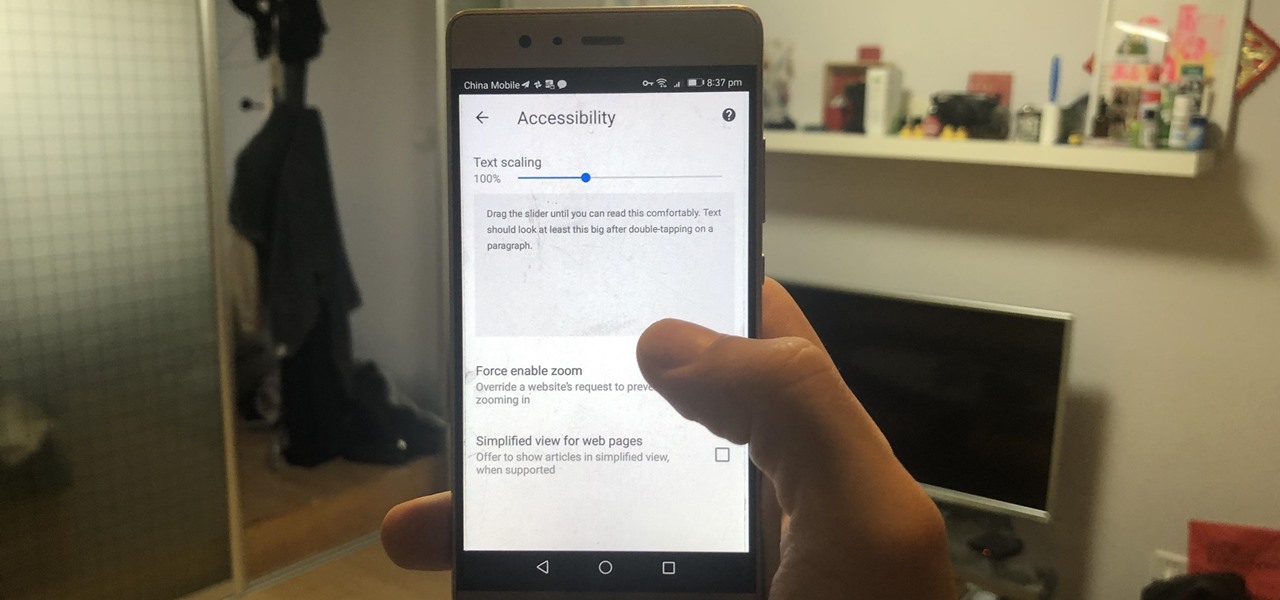
Changing Text Size on Android
Adjusting text size on an Android device can significantly enhance your user experience. Whether you prefer larger text for easier reading or smaller text to save screen space, this guide will help you customize text size to suit your needs.
Method 1: Using the Device's Settings
Open the Settings App
- Open the Settings app on your Android device. This app is usually represented by a gear icon and can be found on your home screen or in the app drawer.
Navigate to Display Settings
- Navigate to the "Display" or "Screen" section. The exact name may vary depending on your device model but is generally located under a category related to display settings.
Adjust Text Size
- Look for an option labeled "Text size" or "Font size." This option is usually found in a sub-menu or as a separate section within the Display settings.
Use the Slider
- Use the slider to increase or decrease the text size to your preference.
Preview Changes
- Many devices offer a preview feature that allows you to see how different text sizes will look on your screen without applying the changes permanently.
Apply Changes
- After selecting your preferred text size, apply the changes by tapping on the "Apply" or "OK" button. The new text size will then be applied across all applications and menus on your device.
Method 2: Using Accessibility Settings
Open Accessibility Settings
- Go to Settings > Accessibility.
Select Display Size
- Look for an option related to display size or text size. This might be under a category such as "Vision" or "Display."
Adjust Display Size
- Adjust the text size, including options for increasing or decreasing font sizes.
Customize Further
- Some devices offer additional customization options within Accessibility settings, such as adjusting font styles or enabling high contrast mode for better readability.
Apply Changes
- Apply the changes by tapping on the "Apply" or "OK" button. The new text size will then be applied across all applications and menus on your device.
Method 3: Using Third-Party Apps
Install Third-Party App
- Search for text size adjustment apps in the Google Play Store and install one that suits your needs.
Launch App
- Launch the app and follow its instructions to adjust the text size.
Customize Settings
- These apps often offer more granular control over font sizes and styles compared to built-in settings. Options like custom font sizes for specific apps or even the ability to change individual character sizes might be available.
Apply Changes
- Apply the changes according to the app's instructions. Some apps may require you to restart your device or apply changes system-wide.
Tips for Customizing Text Size
System-Wide vs. App-Specific Changes
When adjusting text size using built-in settings or third-party apps, changes may apply system-wide or only to specific apps. Be aware of this distinction when making adjustments.
Previewing Changes
Always take advantage of preview features when available. This helps ensure that you're making the right adjustments without causing inconvenience.
Accessibility Features Integration
If using assistive technologies like screen readers or magnification tools, integrating these features with your text size adjustments can significantly enhance your user experience.
Battery Impact Considerations
Larger text sizes can sometimes consume more battery power due to increased screen brightness requirements for better readability. Be mindful of this when making significant adjustments.
Customization Trade-Offs
While customizing text sizes can enhance readability and usability, it may also affect aesthetics or performance in certain situations (e.g., gaming). Be prepared for potential trade-offs when making adjustments.
Common Issues and Solutions
Text Size Not Changing
If you've tried adjusting the text size but it's not taking effect, ensure that you're applying changes correctly (e.g., restarting your device after making adjustments).
Inconsistent Text Sizes Across Apps
Some apps might not respect system-wide text size changes due to their own internal settings or design choices. In such cases, using third-party apps that offer app-specific customization might be helpful.
Performance Impact
Large text sizes can sometimes slow down performance due to increased rendering requirements for fonts on the screen. Monitor performance after making significant adjustments.
By mastering how to change text sizes on your Android device, you'll be able to tailor your experience to better suit your preferences, whether it's for improved readability or enhanced aesthetics.
